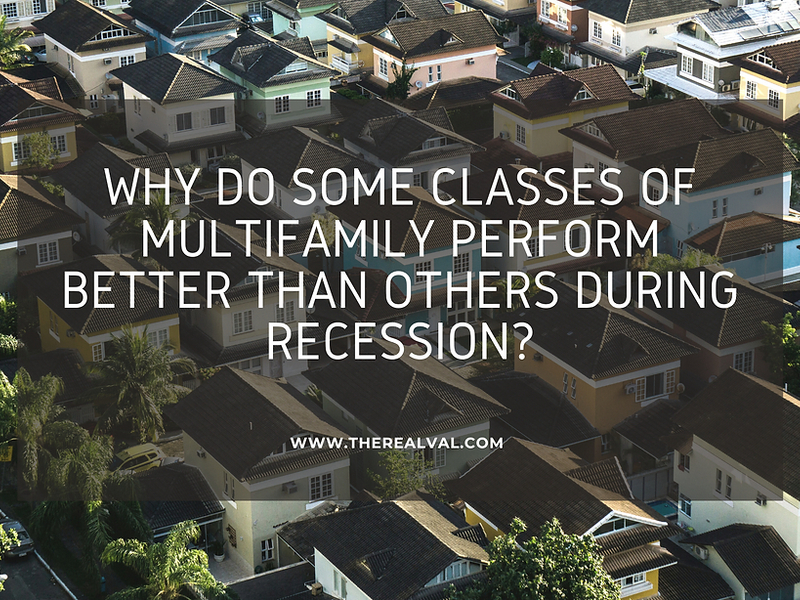The hot topic of the hour is Recession, and while it may or may not be imminent, it is but necessary to put your heads together about the approach that might be feasible to take in the event of a downturn. Let us delve into the Multifamily space today!
Consumer decisions are heavily inspired by economic environment, in addition to the personal preferences, because they add to their personal circumstance. The umbrella of these financial decisions also encompasses how housing preferences shift to align with the reigning economic climate.
Let us first discuss the major classes of the Multifamily real estate:
Class A homes are the pinnacle of excellence in real estate, with modern designs, outstanding locations, and first-rate facilities. These buildings cater to high income renters, charging high rental prices owing to their upmarket amenities and appealing locations. While they carry less risk, the prospective profits may be lesser.
Class B homes, while not as luxury as Class A, provide adequate lodgings and are typically located in good or improving neighborhoods. These buildings offer a compromise between price and quality, attracting a broad tenant base. With intermediate risk levels, they provide rental prices that are lower than Class A but more than Class C.
Class C properties are distinguished by their age, maintenance concerns, and less desirable locations. Offering fewer facilities and attracting lower-income tenants, these buildings have higher potential returns but also higher risks, such as increased vacancy rates and maintenance costs.
Let’s now take a look at the history of the performance dynamics among these classes in an event of a recession:
If performance is strictly measured by rent growth, then class B/C apartment performance certainly does hold up better than class A in times of economic stress. In the 11 quarters defined as recessionary by the NBER since 1999, eight (73%) have been marked by Class B/C rent growth outperforming Class A. This is in stark contrast to expansionary periods, where this directional relationship exits in only 25 of 77 quarters (32%). From a magnitude perspective, annualized rent growth has averaged 1.4% for Class B/C properties and just 0.52% for Class A during recession quarters, while a reversed but much closer 3.24% (Class B/C) and 3.52% (Class A) during expansions.
[Source: quoted from Moody’s Analytics]
What are the reasons for the shift to B/C from A?
Why does the table turn in favor of classes B/C in a contracting economy? Discussed below are a few reasons:
1. Affordability: Class A apartments are often more expensive and provide upscale amenities. However, when circumstances are rough, such as during a recession, people may face financial difficulties such as losing their jobs or earning less money. As a result, people may seek out less expensive housing options, such as Class B or C buildings with reduced rent.
2. Saving Money: Moving to a Class B or C apartment can help save money when things get tight financially. Renters might choose smaller places or ones with fewer extras to cut down on their monthly housing costs.
3. Market Changes: When the economy suffers, the number of individuals looking for luxury flats may decrease. During a recession, fewer individuals may demand Class A apartments, resulting in fewer residents and landlords offering offers to fill them. As a result, Class B or C apartments may appear to be a superior option for tenants and investors alike.
4. Easier Lease Terms: Class B and C apartments may provide greater lease alternatives. Instead of signing a lengthy lease, one may be able to discover shorter ones, which may be useful when money is tight and things are unclear.
5. Location is Important: Class B and C apartments are frequently situated in more diverse neighborhoods, close to essential amenities such as shopping and employment. When money is limited, individuals may choose practicality above luxury, thus they may choose a location that is less expensive yet fits their fundamental necessities.
When the economy faces a setback, individuals frequently seek cheaper and more practical locations to reside, to keep up with their updated financial constraints. This implies that they may be nudged to relocate out of expensive Class A flats and into more affordable Class B or C residences.
A prudent investor should take these parameters into consideration to make informed investing decisions, should a recession happen!
Trending





